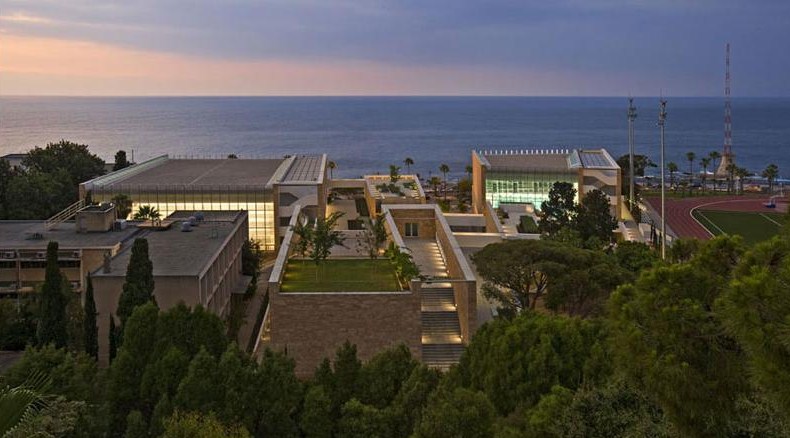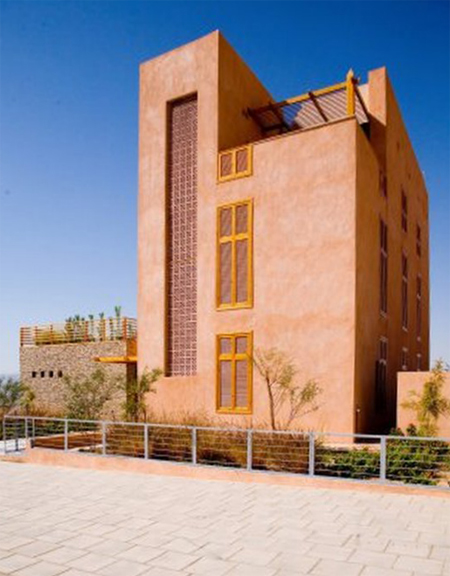|
|

In Pursuit of Sustainable Energy Sources : Challenges and Solutions
Karim Elgendy, Founder and Coordinator of Carboun, was recently commissioned by Frederich Ebert Foundation (Frederich Ebert Stiftung) to produce a set of visual guides to renewable energy in the Arab World to coincide with the 23rd Conference of Parties (COP23). The infographic below is the third of three visual guides. It represents an analysis of the challenges facing renewable energy growth in the Arab World. The three guides, which were researched and designed by Karim Elgendy for the Frederich Ebert Foundation, were based on raw data provided by International Renewable Energy Agency (IRENA), Regional Center for Renewable energy and Energy Efficiency (RCREEE), Lazard, World Energy Council, and Bloomberg. Copyrights for this infographic are reserved for the Frederich Ebert Foundation and the author. No reproduction or republishing of any infographic or part thereof without prior written consent from Frederich Ebert Foundation and the author. Guide 1 covers the state of the region and Guide 2 covers Regional Aspirations. They can also be reached via the infographics page.
Continue reading In Pursuit of Sustainable Energy Sources : Challenges and Solutions

In Pursuit of Sustainable Energy Sources : Regional Aspirations
Karim Elgendy, Founder and Coordinator of Carboun, was recently commissioned by Frederich Ebert Foundation (Frederich Ebert Stiftung) to produce a set of visual guides to renewable energy in the Arab World to coincide with the 23rd Conference of Parties (COP23). The infographic below is the second of three visual guides. It represents a review of plans and aspirations to grow renewable energy capacities in the Arab World and the scale of planned increase in renewable energy capacity. The three guides, which were researched and designed by Karim Elgendy for the Frederich Ebert Foundation, were based on raw data provided by International Renewable Energy Agency (IRENA), Regional Center for Renewable energy and Energy Efficiency (RCREEE), Lazard, World Energy Council, and Bloomberg. Copyrights for this infographic are reserved for the Frederich Ebert Foundation and the author. No reproduction or republishing of any infographic or part thereof without prior written consent from Frederich Ebert Foundation and the author. Guide 1 covers the state of the region and Guide 3 covers Challenges and Solutions. They can also be reached via the infographics page.
Continue reading In Pursuit of Sustainable Energy Sources : Regional Aspirations

In Pursuit of Sustainable Energy Sources : The State of the Region
Karim Elgendy, Founder and Coordinator of Carboun, was recently commissioned by Frederich Ebert Foundation (Frederich Ebert Stiftung) to produce a set of visual guides to renewable energy in the Arab World to coincide with the 23rd Conference of Parties (COP23). The infographic below is the first of three visual guides. It represents an analysis of the state of renewable energy in the Arab World region in its regional context. The three guides, which were researched and designed by Karim Elgendy for the Frederich Ebert Foundation, were based on raw data provided by International Renewable Energy Agency (IRENA), Regional Center for Renewable energy and Energy Efficiency (RCREEE), Lazard, World Energy Council, and Bloomberg. Copyrights for this infographic are reserved for the Frederich Ebert Foundation and the author. No reproduction or republishing of any infographic or part thereof without prior written consent from Frederich Ebert Foundation and the author. Guide 2 covers Regional Aspirations and Guide 3 covers Challenges and Solutions. They can also be reached via the infographics page.
Continue reading In Pursuit of Sustainable Energy Sources : The State of the Region
Karim Elgendy
In 2009, the American University in Beirut’s new student center was recognized as one of the American Institute of Architects’ Top Ten Green Buildings, the most prestigious profesional award for sustainability in the United States and one that is rarely awarded to international projects in the Middle East. The new student center is situated within the 73-acre campus of the American University in Beirut (AUB) and is named after Charles Hostler, the former US Ambassador and an AUB Alum. The student center is sited at the foot of a steep hill overlooking the Mediterranean sea and extends down to the Beirut Corniche, the capital’s grand waterfront boulevard (Image 1). The $30 million project was designed by the Minneapolis based VJAA together with the Lebanon based Samir Khairallah & Partners. The Stuttgart based Transsolar and the San Francisco based Hargreaves were part of the design team as environmental consultants, and Landscape designers, respectively.
 Image 1. View of Charles Hostler Student Center as seen from the Hill above. Copyrights: Paul Crosby Continue reading The American University in Beirut Combines Innovation and Traditional design
Karim Elgendy
UPDATED – The King Abdullah University of Science and Technology (KAUST) at Thuwal (near Jeddah) in Saudi Arabia was recently announced as one of the winners of the American Institute of Architects’ Top 10 Green Buildings awards for 2010.
The new international graduate-level research university was established by the government-owned Aramco, the world’s largest energy corporation, to drive innovation in science and technology and to support world-class research in areas such as energy and the environment. The campus project was designed by HOK Architects and was completed in September 2009.
KAUST’s new campus is Saudi Arabia’s first LEED certified project earning a Platinum certification, the highest rating in the United States’ green building rating system At 496,000 Square meters, the project also represents the world’s largest LEED Platinum project.
 Image 1. Night view. Copyrights J. Picoulet and HOK Continue reading KAUST: A Sustainable Campus in Saudi Arabia
 Aqaba House, Copyrights Joseph Zakarian, Jo Magazine UPDATED – Jordan’s first low energy house in Aqaba is a residential project designed with the intention of creating a prototypical low-cost energy efficient building that achieves substantial energy use reductions without incurring additional construction costs.
After launching a design competition for a prototypical energy efficient house the house owner – a Jordanian environmental researcher- in collaboration with the Jordanian Center for the Study of the Built Environment, chose to proceed with a practical low energy design with an architecture that resonates with local aesthetics.
The competition’s winning scheme by the Dutch architect Florentine Visser, was based on a 3-floor design that included the many spaces required by the owner’s brief (including 6 bedrooms, 3 bathrooms, a car garage, and a basement) in a house with a total area of approximately 420 sqm.
In her approach to designing an energy efficient house, the house’s architect used a combination of passive low energy design strategies and efficient active systems. Passive strategies are strategies that use design to reduce the need for heating and cooling. In the context of the Middle East passive design mostly refers to passive cooling strategies since the cooling requirements of middle eastern buildings far exceed their heating requirements.
Active systems, on the other hand, are mechanical systems such as heating, ventilation, and Air conditioning units (HVAC) efficient active systems use less energy to heat, ventilate, or cool buildings.
Most successful low energy buildings use a combination of passive strategies, active systems, and renewable energy generation to reduce their energy use ,with some buildings achieving the ultimate target of net zero energy, which essentially means that a building -or a development- generates all the energy that it consumes.
Continue reading The First Low Energy House in Jordan
|
|




